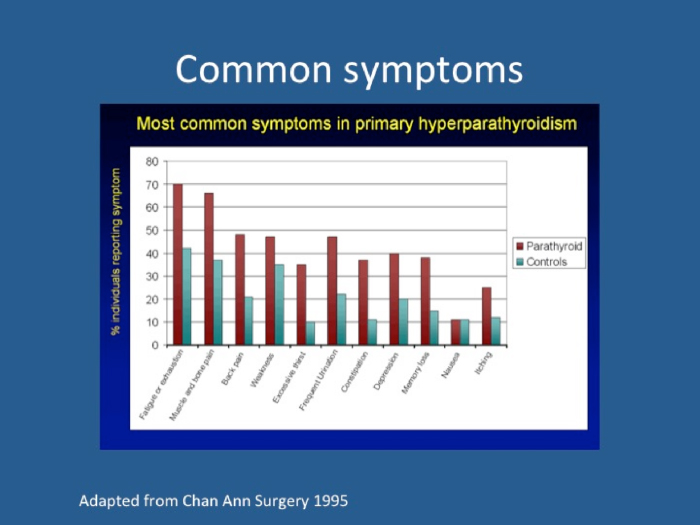An elevated blood calcium is detected frequently because of routine blood testing
However even when the blood calcium is elevated many patients are not investigated to exclude hyperparathyroidism and the diagnosis may be delayed for years.
A recent report from the Cleveland Clinic showed that only about 1% of patients with hyperparathyroidism were properly diagnosed and only 0.3% of those diagnosed were treated by surgery, despite many of these patients having the criteria for surgical treatment.
There are guidelines for recommending surgery in hyperparathyroidism and they include any patient with symptoms ( see later slide), and patients without apparent symptoms if:
- The calcium is more than 1 mg/100ml above normal.
- There is evidence of decreased bone density
- There is evidence of kidney damage
Common symptoms of hyperparathyroidism

This chart shows the wide variety of symptoms that patients with hyperparathyroidism may have. The red bars show patients and the green are comparisons with healthy patients. This is a common way of reporting result in scientific journals.
Blood changes and symptoms not related

This is a very important slide because it may explain why some patients are not referred for surgery. It shows that a patient can have equally bad symptoms if their blood level changes are mild or severe. Some physicians do not refer patients because they appear to only have mild elevations of blood calcium.
I see patients who have troublesome symptoms with mild disease, particularly fatigue, and some patients with marked blood calcium elevation who appear to have no symptoms.